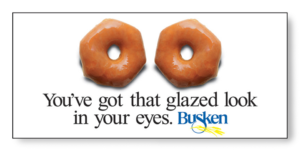Maximize consumer engagement through better experiences.
Creative Department has a long history of providing our clients with simple solutions for this complex world, a focus which has resulted in business success for our clients.
With so much emphasis on consumers’ digital experiences, we wanted to offer a few basic thoughts on Search Engine Optimization, based on nearly 15 years developing digital content. Here are a few important SEO points to keep in mind as you work to maximize your consumer engagement.
The landscape has shifted. Over the last 3-5 years SEO has become more competitive than ever. This is due to algorithm shifts and an increase in the number of websites. Your approaches to SEO just might need an evaluation and an upgrade, especially considering how quickly things change in the digital world.
Part of a larger marketing strategy. We believe in the power of SEO. However, the Creative Department perspective is that SEO should be utilized as a component to a larger online marketing strategy. It cannot be thought of as just adding keywords to a website and a ranking for a singular term. Because if that’s your expectation, you’re probably missing some serious horsepower in your marketing drivetrain.
When promoting a website online we must think of all of the other digital channels that ladder up to a holistic digital strategy. These include, but are not limited to Paid Search, Content Marketing, Social Media, Video, Display, Remarketing, Email and Marketing Automation. Consistency in messaging – one of the amazing benefits of search optimization – will make certain these touchpoints work as hard as possible, all within the brand’s established guidelines.
Building better websites. At Creative Department, our take is that SEO isn’t just about building a search engine friendly website. It’s about building a website that is better for people. Websites that are engaging, easy to access, and use. (There’s that CD focus on “simple solutions” again.) Because with a focus on maximizing consumer experience, you create websites that solve problems for your clients, resulting in stronger leads and increased sales.
Three basic forms. Not all SEO is created to accomplish the same results. Here are factors to consider:
Technical SEO: Promotes health of site for search engines to index and promote the site within search rankings.
On-page SEO: Website content that aligns to users’ keyword searches for improved rankings of the website in results.
Off-page SEO: Citations, local listings, and online reviews help users discover local solutions, resulting in organic traffic and increased local rankings.
A few words about keywords. Sometimes, when adequate research isn’t available at the start of an assignment, which is often the case in the current climate of ever-tightening budgets, we use our instincts and evaluate a broad range of keywork options. That way, we don’t miss a creative solution that offers a strong consumer connection.
Writing for effective SEO. Once you’ve found your essential keywords, we recommend that you first start by including them in on-page copy to help with SEO. These should be incorporated into current pages or utilized in creating more effective new content. But that’s just the start of their impact.
Ultimately, promotion is just part of the challenge. Yes, a smart SEO effort can help get the right eyes on your website, but you’re not exercising the right marketing muscle if you haven’t considered the consumer experience once they find you. Whether you’re making a simple improvement to an existing site or building one from scratch, you should have a good sense of the actions you want them to take. That’s a key component of a solid SEO strategy.



